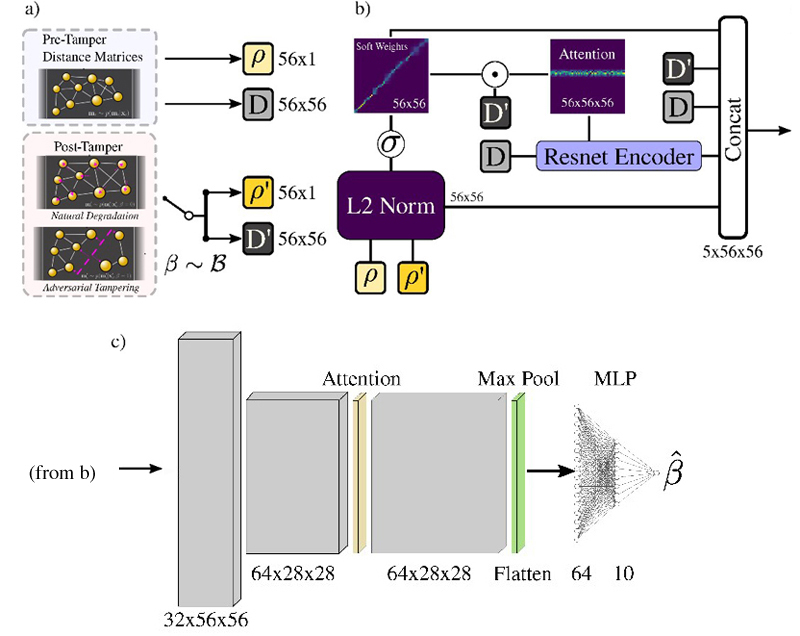| RAPTOR uses an attention mechanism for prioritizing nanoparticle correlations across pre-tamper and post-tamper samples before passing them into a residual, attention-based deep convolutional classifier. a) RAPTOR takes the top 56 nanoparticles in descending order of radii to construct the distance matrices D and D′ and radii ρ and ρ′ from the pre-tamper and post-tamper samples. b) The radii and distance matrices form the query and value embeddings of an attention mechanism. The attention mechanism is then used alongside the raw distance matrices D′ and D, the softweight matrix, and L2 matrix generated from the radii vectors for the classifier. c) The classifier uses GELU activation and attention layers before applying a kernel layer and max pool layer. Then, the output is flattened into a multi-layer perceptron to compute the final classification. Credit: Wilson et al., doi 10.1117/1.AP.6.5.056002 |
